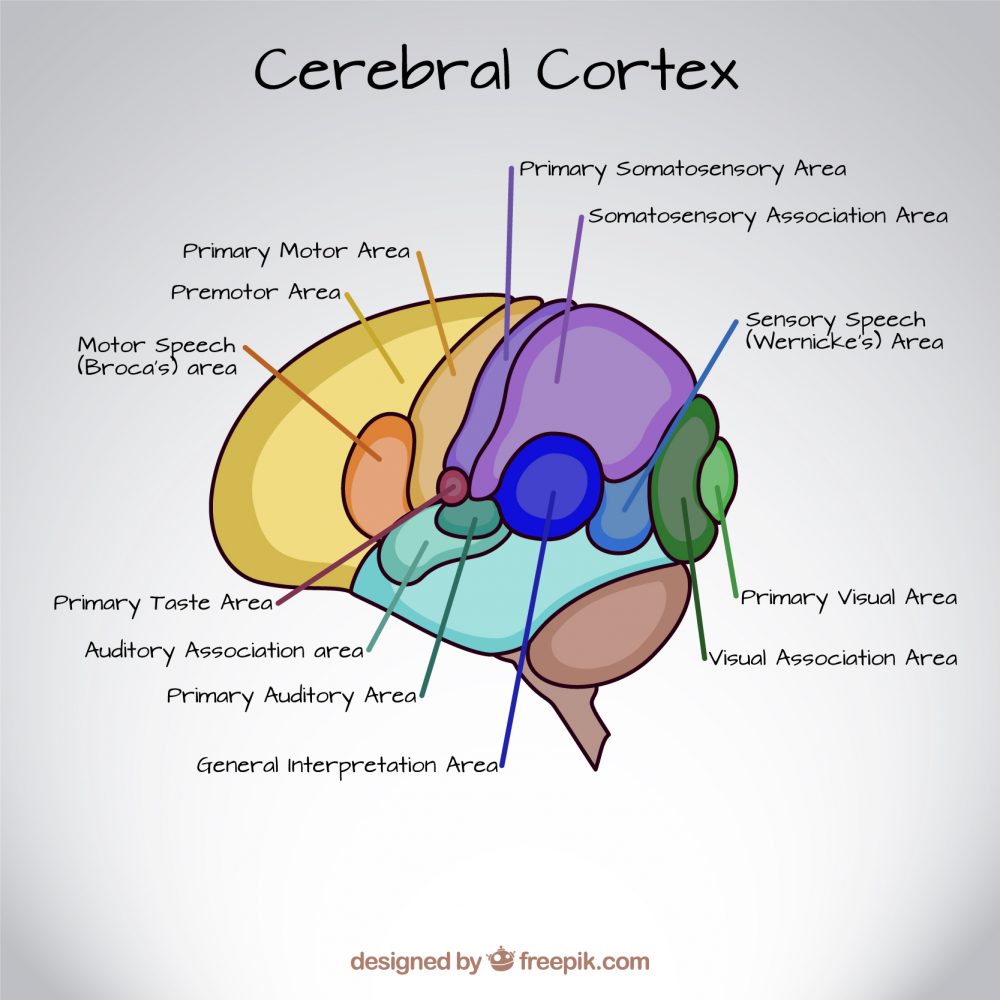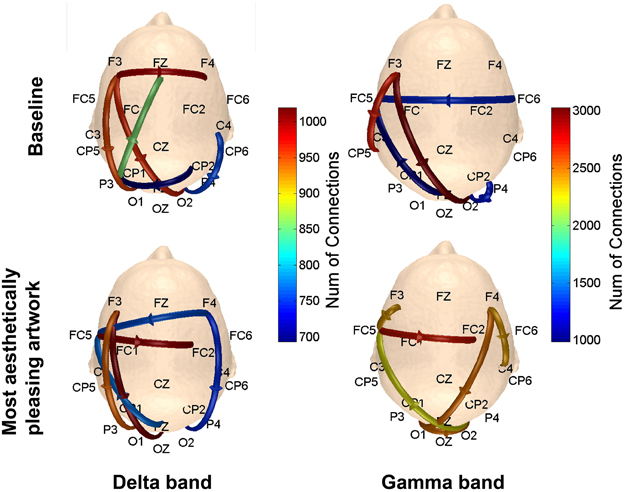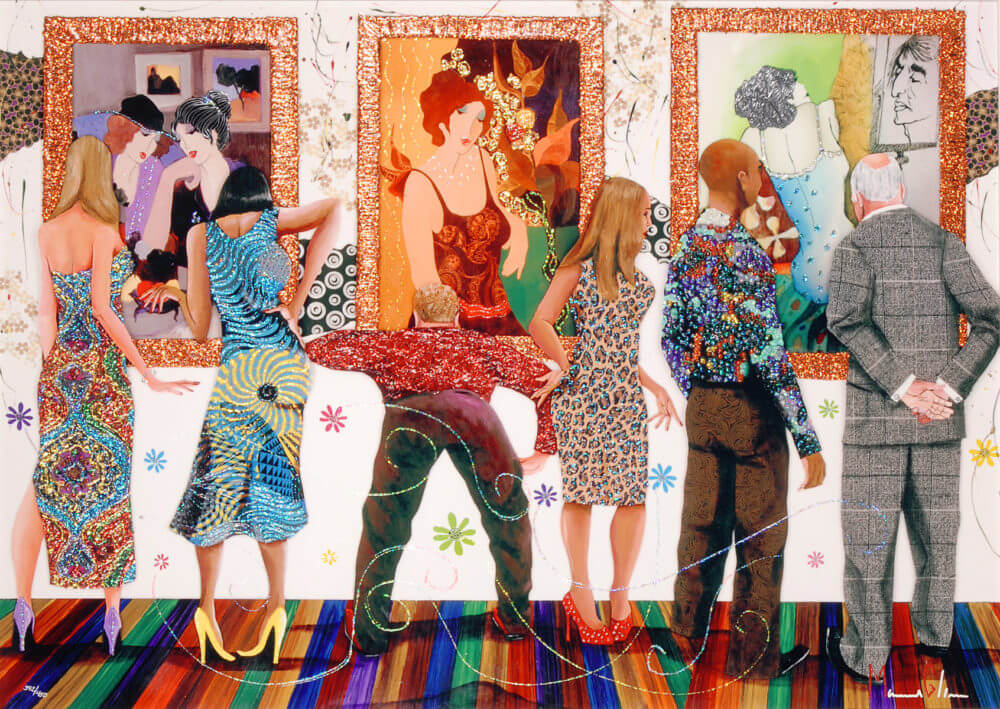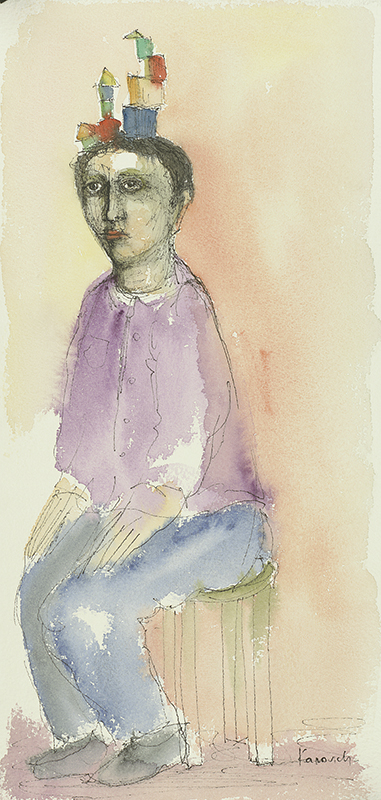Science is Examining Your Brain on Art
When walking through a museum or gallery, you will likely find a work of art that interests or captivates you without understanding why.
Humankind has a deep connection with art. While science may never truly solve the mystery of why art evokes emotional and physical reactions, it is exploring this relationship to improve the mental well-being of others.
Neuroaesthetics is a field of study that uses neuroscience to explain and understand aesthetic experiences. In other words, researchers look at how the brain reacts to viewing or creating a work of art.
One recent study by the University of Houston set out to determine how our brains react to viewing art during an exhibition. The study had more than 400 volunteers wear EEG caps – noninvasive headgear with 64 electrodes attached – while viewing an exhibition at Houston-based art museum The Menil Collection over a three-month period.
Researchers tracked how the participants moved through the exhibit to determine how they reacted to specific works of art. They also took note of other factors, such as age, gender and which works the volunteers found the most beautiful or moving.

Anatomy of a brain (Infographic vector designed by Freepik)
The EEG caps created a map of the brain networks that respond to viewing art. By examining this data, scientists can glean new information on how people think and feel about art as they experience it.
University of Houston researcher Jose Luis Contreras-Vidal conducted the study, which is funded by the National Science Foundation. An article from the foundation states Contreras-Vidal’s research could lead to a deeper understanding of neural activity and creativity.
“We’re getting data we clearly need,” Contreras-Vidal said. “But it’s also great in terms of outreach. You can actually combine science and art and engineering.”
The conclusion? Scientists could discover how exactly our brains react to art by monitoring brain waves.
The Results

Images showing brain networks. The top images are the baseline, while the bottom images show networks when subjects viewed artwork they found the most aesthetically pleasing. (Image courtesy of Frontiers)
The study revealed some interesting findings. When viewing art, there is a major increase in a brain’s delta wave connectivity, which is linked to a person’s decision making and sustained attention. There is an even higher increase in the brain’s gamma wave activity, which is linked to information processing and cognition.
More importantly, researchers noticed an overlap between connected regions in the delta and gamma waves when subjects viewed art. This reveals an interdependency of emotional and visual processing that occurs when we look at art. The study notes, however, that further investigation is needed to demonstrate this connection with more certainty.
Overall, when viewing art, there is more activity from the visual cortex in the frontal lobe (responsible for processing visual input). This is followed by additional activity in the frontal lobes where emotional expression and judgment happen. The activity is higher than when a subject wasn’t viewing art.
The conclusion? The study reveals a connection between emotional and visual processing, decision making and expression when we view art.
Reactions to Art

“Spectators at the Tarkay Exhibition” (2016), Marcus Glenn
The research will undoubtedly add to previous discoveries. For instance, a study from New York University in 2012 had participants view 109 different images and rate them on how much each image moved them on a scale from 1 to 4. Using functional magnetic resonance imaging, neuroscientists analyzed the brain areas involved when observing these images.
When the subjects viewed artwork they found the most moving, the network of brain regions activated overlaps with the brain network associated with self-reflection and personal relevance. This means if a viewer relates to the artwork personally, they likely find it more emotionally moving.
Our reactions go beyond our brains and into our muscles. One study highlighted by the Smithsonian Magazine focused on Michelangelo’s “Expulsion from Paradise” on the Sistine Chapel. Neuroscientists and an art historian asked 10 subjects to examine the wrist detail from the painting’s depiction of Adam, who is backing away from a sword-wielding angel in a defensive position.
The scientists monitored the brain activity of the subjects, discovering the image stimulated the areas in the primary motor cortex that controlled the observers’ wrists. By viewing the figure, the wrist muscles in the observer activated.
The conclusion? Not only do our brains react with self-reflection when viewing art, but even our bodies will respond when viewing art.
The Benefits of Studying Art on the Brain

“On the Brain” (2015), Mark Kanovich
University representatives say Contreas-Vidal is still conducting other studies to better understand what happens inside the brain when people create and contemplate art. The research is a step toward reverse-engineering the brain by mapping individual experiences, thoughts and emotions.
“Maybe in 10 years or so, we will have neural technology just like our smart phones; you can wear it and contribute to science,” Contreras-Vidal told the National Science Foundation. “You can provide data that can be mined, whether you’re an engineer, or a doctor, or an artist trying to create something new.”
The benefits of these studies go beyond analyzing our connection to art. By better understanding the brain networks activated when viewing or creating art, advancements can be made in art therapy, which is often used in treating mental illnesses.
Similarly, by looking at such a diverse set of data, researchers can customize neuro-technology to meet individual needs. Advances like this could provide personalized treatment for ailments like depression and pain.
The conclusion? Studying the effects of art on the brain can lead to positive advancements in technology that could bring about treatments for neural damage or disorders.
Viewing art is shown to improve mental well-being. Be sure to visit Park West Gallery in Southfield, Michigan or aboard cruise ships around the world for your recommended dose of art.






